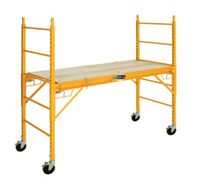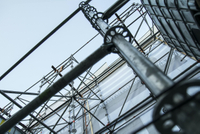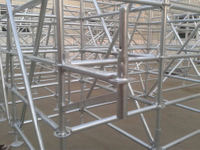Content Menu
● Introduction to Ringlock Scaffolding and Tube and Clamp Scaffolding
>> What is Ringlock Scaffolding?
>> What is Tube and Clamp Scaffolding?
● Design and Components Comparison
>> Detailed Components Breakdown
● Installation Efficiency
>> Ringlock Scaffolding
>> Tube and Clamp Scaffolding
● Stability and Safety
>> Ringlock Scaffolding
>> Tube and Clamp Scaffolding
● Cost Comparison
>> Additional Cost Factors
● Applications and Suitability
>> Specialized Uses of Ringlock Scaffolding
>> Specialized Uses of Tube and Clamp Scaffolding
● Conclusion
● FAQ
>> 1. What are the main advantages of ringlock scaffolding over tube and clamp?
>> 2. Can tube and clamp scaffolding be used for high-rise buildings?
>> 3. Is ringlock scaffolding more expensive than tube and clamp?
>> 4. How does the installation time compare between the two systems?
>> 5. Are there different types of ringlock scaffolding?
In the construction industry, selecting the right scaffolding system is crucial for safety, efficiency, and cost-effectiveness. Two of the most widely used scaffolding systems are Ringlock scaffolding and Tube and Clamp scaffolding. This article provides a comprehensive comparison of these two systems, covering their design, installation, stability, cost, applications, and more.
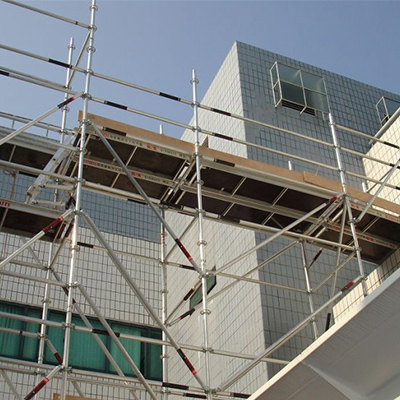
Introduction to Ringlock Scaffolding and Tube and Clamp Scaffolding
What is Ringlock Scaffolding?
Ringlock scaffolding is a modern modular scaffolding system characterized by vertical standards with circular rosettes (rings) welded at regular intervals. This design allows horizontal ledgers and diagonal braces to be quickly and securely connected at various angles using wedge locks. The system is known for its:
- Quick assembly and disassembly
- High stability and load capacity
- Flexibility to adapt to complex structures
- Reusable components for cost efficiency
Ringlock scaffolding is widely used in high-rise buildings, bridges, and industrial projects due to its versatility and safety features.
What is Tube and Clamp Scaffolding?
Tube and Clamp scaffolding, also known as tubular scaffolding, is a traditional system that uses steel tubes connected by clamps or couplers. It is highly versatile because it can be assembled into almost any shape or size, making it suitable for irregular or custom structures. However, it requires:
- Manual fitting and tightening of clamps
- More labor-intensive and time-consuming assembly
- Higher skill level for precise installation
Tube and Clamp scaffolding is often preferred for smaller or less complex projects where budget constraints are significant.
Design and Components Comparison
Feature | Ringlock Scaffolding | Tube and Clamp Scaffolding |
Connection Mechanism | Rosette (ring) with wedge locks | Clamps/couplers tightened manually |
Components | Standards, ledgers, diagonal braces, wedges | Steel tubes and clamps |
Modularity | Highly modular with prefabricated parts | Fully customizable but no prefabricated modules |
Flexibility | Adjustable angles (up to 8 directions) | Unlimited flexibility in angles and lengths |
Typical Pipe Diameter | Standards: 48.3 mm (standard), 60.3 mm (heavy duty) | Varies, typically standard steel tubes |
The ringlock system's rosette design allows quick and secure connections at multiple angles, while tube and clamp scaffolding relies on the manual assembly of clamps, which can be slower and less precise.
Detailed Components Breakdown
- Ringlock Standards: Vertical tubes with rosettes welded at 500mm intervals, providing multiple connection points.
- Ledgers: Horizontal tubes that connect to the standards using wedge locks.
- Diagonal Braces: Provide rigidity and prevent sway.
- Wedges: Inserted into the rosette slots to lock ledgers and braces securely.
- Base Plates and Couplers: Provide support and stability on the ground.
In contrast, Tube and Clamp scaffolding consists primarily of:
- Steel Tubes: Cut to required lengths.
- Right Angle Couplers: Connect tubes at 90 degrees.
- Swivel Couplers: Allow connections at any angle.
- Putlog Couplers: Attach tubes to walls or other structures.
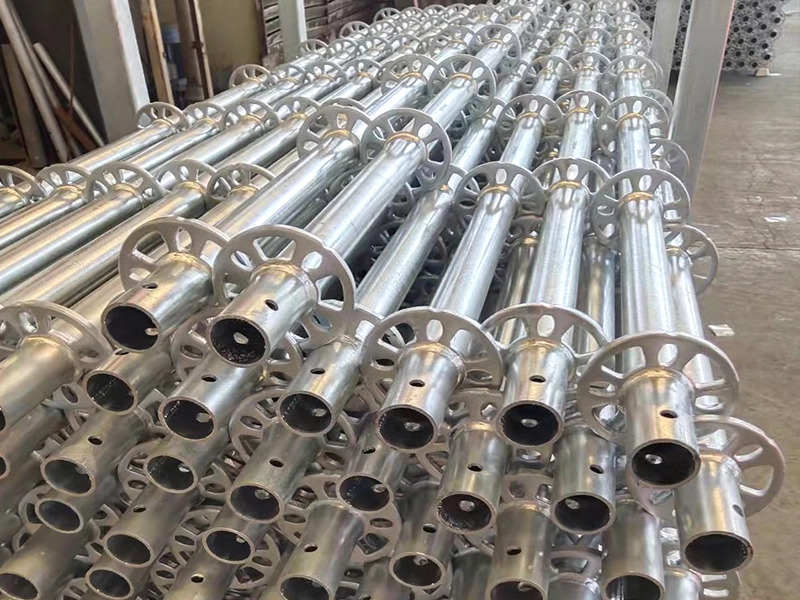
Installation Efficiency
Ringlock Scaffolding
The modular design of ringlock scaffolding enables rapid assembly and disassembly. Components are prefabricated and standardized, allowing workers to connect parts quickly using a hammer to insert wedges into the rosettes. This reduces installation time and labor costs significantly. The system also requires less measuring and adjustment on site, making it ideal for projects with tight deadlines.
Advantages in Installation:
- Tool efficiency: Only a hammer is needed for wedge insertion.
- Reduced measuring: Pre-set rosette positions eliminate extensive on-site measurements.
- Fewer components: Simplifies logistics and inventory management.
- Safety: Secure wedge locking reduces risks during assembly.
Tube and Clamp Scaffolding
Tube and clamp scaffolding requires manual alignment, measuring, and tightening of clamps for each joint. This process is labor-intensive and demands skilled workers. Disassembly is equally time-consuming, as each clamp must be loosened individually. This makes the system less efficient for projects requiring frequent setup and teardown or large-scale operations.
Challenges in Installation:
- Labor-intensive: Each clamp must be manually tightened.
- Time-consuming: Precise measurements and adjustments are necessary.
- Higher skill requirement: Workers must be experienced to ensure safety.
- Increased risk: Loose clamps can lead to accidents if not properly maintained.
Stability and Safety
Ringlock Scaffolding
Ringlock scaffolding provides superior stability due to its rigid rosette connections that evenly distribute loads. The wedge locking mechanism ensures joints remain secure during use, minimizing the risk of loosening. The system's design supports high load capacities, making it suitable for heavy-duty and high-rise construction projects. Its safety features reduce the risk of accidents on site.
Safety Features:
- Self-locking wedges: Prevent accidental disengagement.
- Even load distribution: Reduces stress on individual components.
- High-quality materials: Typically made from galvanized steel for corrosion resistance.
- Regular inspection ease: Modular design facilitates quick safety checks.
Tube and Clamp Scaffolding
While tube and clamp scaffolding is stable when properly installed, the reliance on clamps can lead to loosening over time, especially under dynamic loads or vibrations. This can compromise safety if not regularly inspected and maintained. The system's flexibility can sometimes be a double-edged sword, requiring constant vigilance to ensure structural integrity.
Safety Considerations:
- Clamp loosening: Requires frequent tightening and inspection.
- Variable load distribution: Uneven tightening can cause weak points.
- Material fatigue: Tubes and clamps can wear faster under heavy use.
- Higher risk in adverse conditions: Wind or vibrations may affect stability.
Cost Comparison
Aspect | Ringlock Scaffolding | Tube and Clamp Scaffolding |
Initial Material Cost | Higher due to specialized components | Lower; uses standard steel tubes and clamps |
Labor Cost | Lower due to faster assembly and less labor | Higher due to time-consuming installation |
Maintenance Cost | Lower; fewer parts and more durable connections | Higher; clamps require frequent checking |
Long-term Cost | More cost-effective for large or repeated use | More economical for small or one-time projects |
Although ringlock scaffolding has a higher upfront cost, its efficiency and durability often result in lower overall project expenses, especially for large-scale or complex jobs. Tube and clamp scaffolding may be more budget-friendly for smaller, simpler projects.
Additional Cost Factors
- Storage and Transport: Ringlock components are uniform and stackable, reducing transport costs.
- Damage and Replacement: Modular parts in ringlock systems are easier to replace, whereas tube and clamp parts may suffer more wear and tear.
- Training Costs: Ringlock scaffolding requires less specialized training due to its intuitive assembly.
Applications and Suitability
Application Type | Ringlock Scaffolding | Tube and Clamp Scaffolding |
High-rise buildings | Ideal due to stability and modularity | Less common due to slower assembly |
Bridges and industrial sites | Frequently used for heavy loads | Used but less efficient |
Maintenance and painting | Suitable, especially with lightweight aluminum versions | Commonly used for small-scale or irregular jobs |
Complex geometries | Easily adapted with adjustable rosettes | Requires custom fitting and more time |
Ringlock scaffolding is favored for projects demanding speed, safety, and adaptability, while tube and clamp remains a versatile option for custom, smaller-scale tasks.
Specialized Uses of Ringlock Scaffolding
- Facade work: The system can be easily adjusted to fit building contours.
- Event staging: Quick assembly and dismantling are advantageous.
- Temporary bridges: High load capacity and modularity suit temporary structures.
Specialized Uses of Tube and Clamp Scaffolding
- Restoration projects: Flexibility allows adaptation to irregular historic buildings.
- Industrial piping: Custom shapes can be formed to navigate complex piping systems.
- Short-term jobs: Lower material costs make it suitable for brief projects.
Conclusion
Ringlock scaffolding and Tube and Clamp scaffolding each have distinct advantages and limitations. Ringlock scaffolding excels in speed, stability, safety, and adaptability, making it the preferred choice for large-scale, complex, or high-rise projects. Its modular design reduces labor costs and enhances worker safety.
Tube and clamp scaffolding offers unmatched flexibility and lower initial costs, suitable for smaller or custom projects where time is less critical. However, it demands more skilled labor and longer installation times.
Choosing the right system depends on your project's scale, complexity, budget, and timeline. For modern construction demanding efficiency and safety, Ringlock scaffolding stands out as a superior solution.
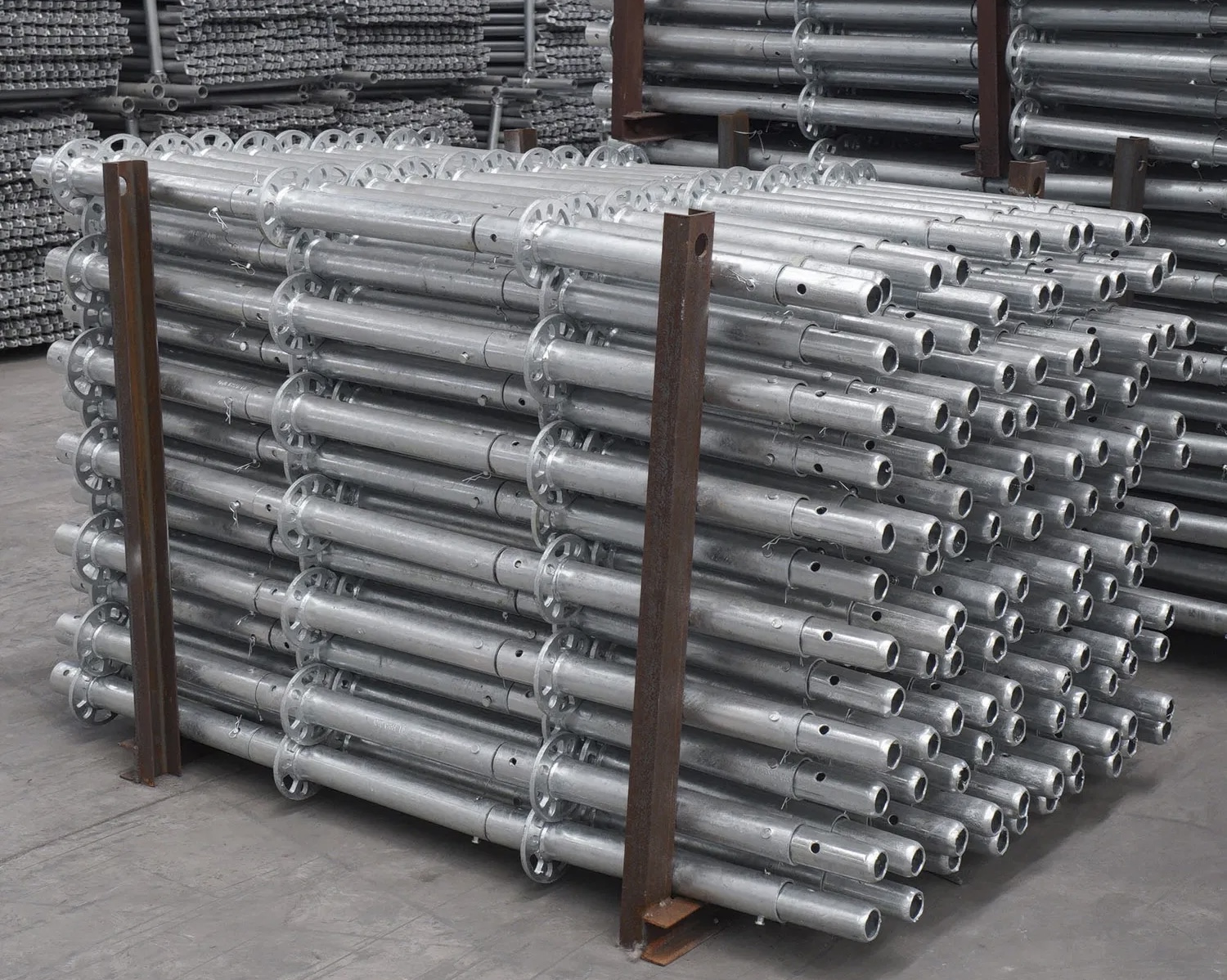
FAQ
1. What are the main advantages of ringlock scaffolding over tube and clamp?
Answer: Ringlock scaffolding offers faster assembly, higher stability, modularity, and better safety due to its rosette locking system, whereas tube and clamp is more labor-intensive and less stable over time.
2. Can tube and clamp scaffolding be used for high-rise buildings?
Answer: While possible, tube and clamp scaffolding is generally less suitable for high-rise projects due to slower assembly and lower stability compared to ringlock scaffolding.
3. Is ringlock scaffolding more expensive than tube and clamp?
Answer: Ringlock scaffolding has higher upfront material costs but often results in lower overall project costs because of reduced labor and maintenance expenses.
4. How does the installation time compare between the two systems?
Answer: Ringlock scaffolding can be assembled and dismantled much faster due to its modular components and wedge locking, while tube and clamp requires manual fitting and tightening of clamps, which is more time-consuming.
5. Are there different types of ringlock scaffolding?
Answer: Yes, there are steel and aluminum versions, as well as single and double ringlock systems, each suited for different load requirements and project types.













